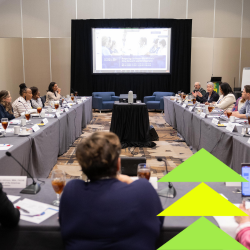Jing Wang, MD, PhD, discusses his experiences as a Chinese American whose research centers on the regulation of pain.
In this fourth blog in a series to celebrate Asian American and Pacific Islander (AAPI) Heritage Month in May, Jing Wang, MD, PhD, talks about his path into research and his efforts to break down barriers to trial participation.
A faculty member at NYU School of Medicine, Wang is the Valentino D.B. Mazzia, MD, JD, Associate Professor; Director, Interdisciplinary Pain Research Program; Vice Chair for Clinical and Translational Research; and a member of the Department of Anesthesiology, Perioperative Care, and Pain Medicine and of the Department of Neuroscience and Physiology. Wang’s research interests center on the role of brain circuits in the regulation of acute and chronic pain.
“I came to the U.S. from China when I was 16, and went to high school in Boston, then to Harvard for a bachelor’s degree in biochemistry, and on to Columbia for an MD and PhD,” says Wang. “My mother and father are both scientists, and I followed in their footsteps to begin with. Now, I’m involved in ‘bench-to-bedside’ research, including preclinical research, an ongoing Phase II trial on ketamine in postoperative pain management, and a Phase III multicenter study.”
“Minorities, especially those who do not speak English, face barriers to participation in clinical trials, and we are mindful of these in our trial designs,” notes Wang. “I’m acutely aware of cultural issues from both the provider and patient perspective. In my pain management practice, I see that language, culture, and [people’s lack of] trust in our complex healthcare system are barriers. Added to this, many members of underserved minority communities lack insurance. We work hard to get good minority representation in our studies, since clearly, if all trial participants are Caucasians, we will not know whether the drug works in other ethnicities.”
Asian Americans belong to a very broad category, with a wide range of languages and cultures, making inclusion challenging in studies and in the clinical care setting. “While to some extent all immigrants share a common story, the experience of a refugee clearly differs greatly from that of an invited professor,” notes Wang. “Education plays a major role. We see this more acutely in the first-generation immigrants, who are often less fluent in English, than in the second generation, which is typically better educated and fluent in English. Asian American from various countries each have a different backstory that shapes their world view—and we need to be sensitive to these factors in clinical care and clinical research.”
“At my institution, we try to break down potential barriers to trial participation wherever we can,” says Wang. “We provide interpreters and translate key materials into multiple languages. However, in trials that use validated questionnaires to record outcomes, full inclusion can be hard to achieve, since the validated questionnaire is often available only in English and Spanish. Ideally, we need to have these types of questionnaires validated in additional languages to help with inclusion.”
“Historically, Chinese Americans have been strong in basic scientific bench research, but now they are also increasingly involved in clinical research,” concludes Wang. “In my experience of multicenter trials, many of the collaborators have Chinese heritage. This is an exciting development, and I’m eager to play my part as a mentor to the next generation of clinical research professionals and bench scientists—helping to increase both diversity and innovation.”
Author: Jill Dawson



